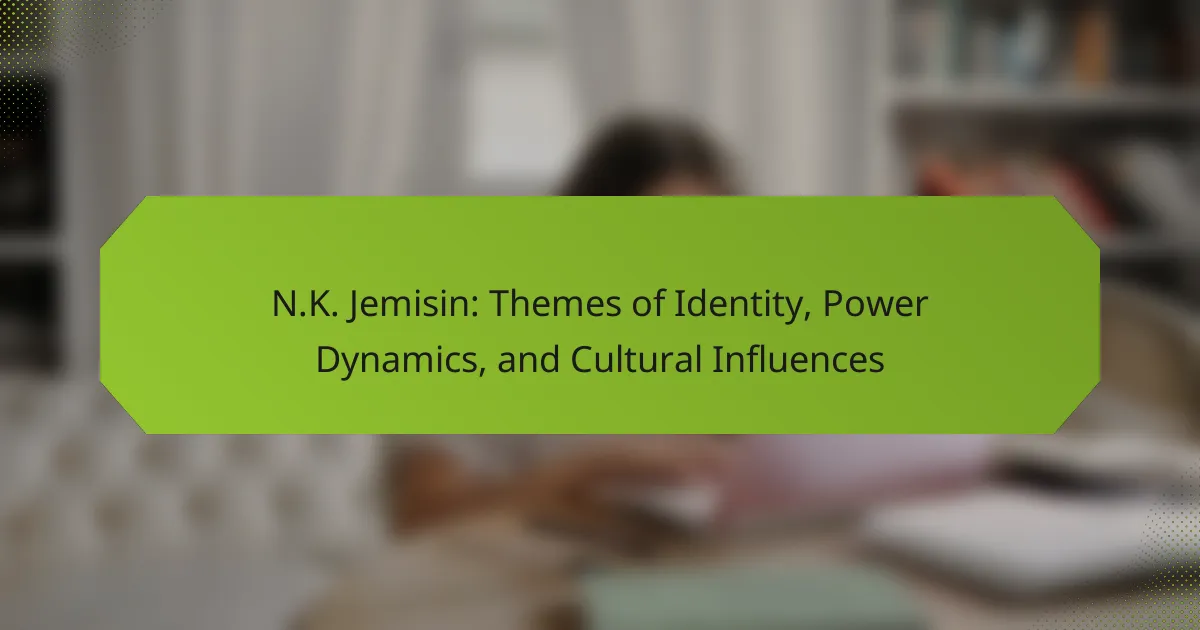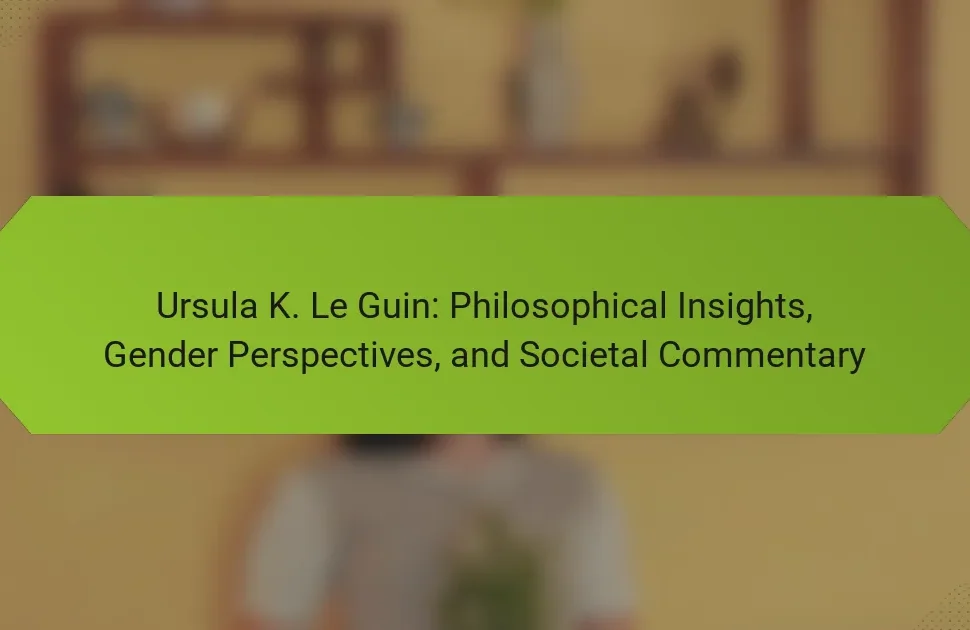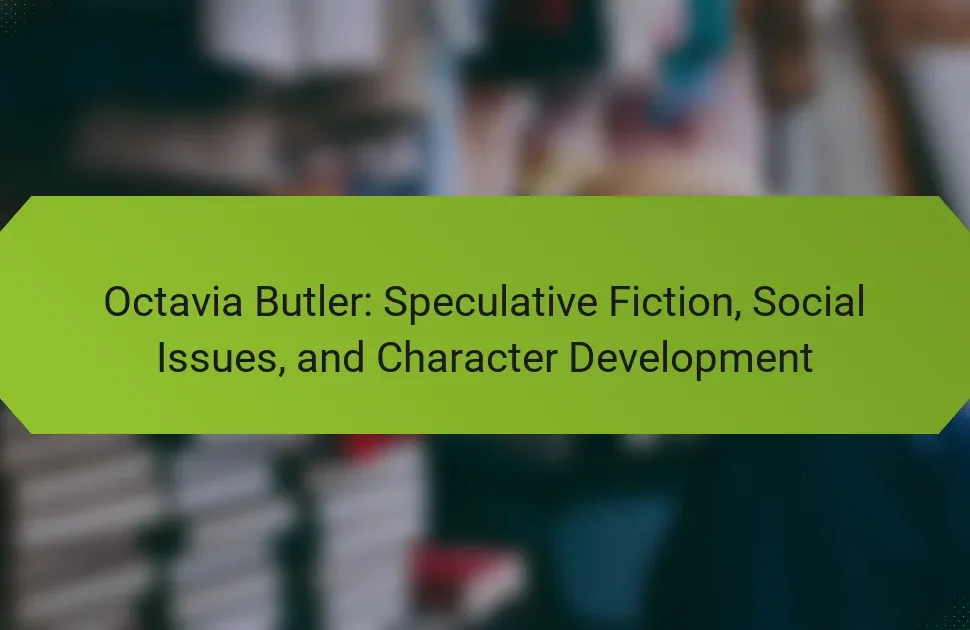N.K. Jemisin’s works challenge readers to reflect on identity and power dynamics within societal structures. This article examines her exploration of personal and cultural identities, the impact of systemic oppression, and the integration of diverse cultural influences. It also highlights her unique narrative techniques and the engagement of readers with marginalized voices. Through these lenses, Jemisin’s storytelling offers critical insights into contemporary discussions on social justice and identity.

How does N.K. Jemisin explore themes of identity in her works?
N.K. Jemisin explores themes of identity through complex characters and societal structures. Her works often depict how personal and cultural identities intersect with power dynamics. For instance, in “The Fifth Season,” she examines how oppression shapes individual identity, showcasing the struggle for self-definition amidst societal constraints. Jemisin’s narratives emphasize the fluidity of identity, reflecting the diverse experiences of marginalized groups. This exploration not only highlights personal journeys but also critiques systemic inequalities, making her work resonate with contemporary discussions on identity and power.
What are the key identity struggles faced by characters in Jemisin’s narratives?
Characters in N.K. Jemisin’s narratives face significant identity struggles related to cultural heritage, societal expectations, and personal agency. These conflicts often arise from the intersection of power dynamics and systemic oppression. For example, characters grapple with their roles within oppressive societies while striving for autonomy. This duality highlights the unique attribute of identity formation influenced by external and internal factors, as seen in works like “The Fifth Season.” Rarely, characters also confront the challenges of reconciling multiple identities, reflecting the complexity of cultural influences in their lives.
How do cultural backgrounds influence character identity in Jemisin’s stories?
Cultural backgrounds significantly shape character identity in N.K. Jemisin’s stories. Her narratives often explore the interplay between cultural heritage and personal identity, reflecting how societal influences affect individual choices and experiences. For example, characters in her works navigate complex power dynamics rooted in their cultural contexts, revealing unique attributes that differentiate them. This deep cultural integration allows readers to engage with diverse perspectives, enhancing the richness of character development. Jemisin’s emphasis on cultural influences serves as a powerful commentary on identity formation in a multifaceted world.
In what ways do Jemisin’s characters navigate intersectional identities?
N.K. Jemisin’s characters navigate intersectional identities by embodying complex backgrounds and experiences. They face societal power dynamics that shape their identities, reflecting themes of race, gender, and culture. For instance, characters often grapple with the implications of their heritage while challenging oppressive structures. This multifaceted approach allows Jemisin to explore unique attributes of identity, such as resilience and agency, within diverse cultural landscapes.

What power dynamics are present in N.K. Jemisin’s storytelling?
N.K. Jemisin’s storytelling features complex power dynamics shaped by identity and cultural influences. Her narratives explore how systemic oppression affects individuals and communities. For instance, she often contrasts the struggles of marginalized groups against dominant powers, highlighting themes of resistance and resilience. Unique attributes in her work include the use of speculative elements to challenge societal norms and provoke critical thought about real-world hierarchies. These dynamics reflect broader conversations about race, gender, and social justice, making her storytelling both relevant and impactful.
How does Jemisin depict oppression and resistance in her narratives?
N.K. Jemisin vividly depicts oppression and resistance through complex characters and intricate world-building. Her narratives often reflect societal hierarchies and the struggle against systemic injustices. For example, in “The Fifth Season,” Jemisin explores themes of subjugation faced by certain groups, while highlighting their resilience and capacity for rebellion. This duality emphasizes the importance of identity in the fight against oppression. Jemisin’s unique approach intertwines personal and collective experiences, illustrating how power dynamics shape cultural identities.
What role does systemic power play in the world-building of Jemisin’s fiction?
Systemic power is central to the world-building in N.K. Jemisin’s fiction, shaping characters and societies. Jemisin explores how power dynamics influence identity and cultural interactions. In her works, systemic power manifests through hierarchies, oppression, and resistance. This creates complex narratives that reflect real-world social structures. The unique attribute of her storytelling is the integration of diverse cultural influences, enriching the reader’s understanding of power’s role in shaping human experiences.
How are personal power and agency portrayed through Jemisin’s protagonists?
N.K. Jemisin’s protagonists exemplify personal power and agency through their resilience and defiance against oppressive systems. Characters like Essun in “The Fifth Season” embody the struggle for autonomy while navigating societal constraints. Jemisin portrays empowerment as a journey where individuals reclaim their identities amidst chaos. This theme resonates with readers, showcasing the importance of self-determination in overcoming adversity. The protagonists’ unique attributes, such as their diverse backgrounds and abilities, further highlight the multifaceted nature of agency in a complex world.

Which cultural influences shape the themes in N.K. Jemisin’s works?
N.K. Jemisin’s works are shaped by diverse cultural influences that explore themes of identity and power dynamics. Her narratives often reflect African mythology, social justice, and historical contexts, emphasizing the complexities of marginalized voices. For example, Jemisin draws on West African traditions and folklore, integrating them into her world-building. Additionally, her characters often grapple with systemic oppression, mirroring real-world issues of race and identity. This cultural richness enhances her storytelling, making her themes resonate deeply with readers.
How does Jemisin incorporate mythology and folklore into her storytelling?
N.K. Jemisin intricately weaves mythology and folklore into her narratives, enhancing themes of identity and power. She draws on diverse cultural traditions, creating rich, multifaceted worlds. For instance, her use of African mythology in “The Broken Earth” trilogy deepens character development and societal dynamics. This incorporation allows readers to explore complex power structures and cultural identities, reflecting the unique attributes of her storytelling style.
What are the reflections of contemporary social issues in Jemisin’s narratives?
N.K. Jemisin’s narratives reflect contemporary social issues through themes of identity, power dynamics, and cultural influences. Her work often explores systemic oppression, highlighting the struggles of marginalized groups. For instance, the Broken Earth trilogy addresses environmental degradation and social hierarchies, mirroring real-world inequalities. Jemisin’s characters navigate complex identities, revealing the intersectionality of race, gender, and class. This multifaceted approach resonates with readers, prompting discussions on societal norms and injustices. Additionally, her unique world-building serves as an allegory for current socio-political climates, making her narratives both relevant and impactful.
How do Jemisin’s works resonate with diverse cultural perspectives?
N.K. Jemisin’s works resonate deeply with diverse cultural perspectives through their exploration of identity, power dynamics, and cultural influences. Her narratives often reflect the complexities of marginalized voices, emphasizing themes of resilience and community.
Jemisin’s unique ability to weave intricate world-building with cultural allegories allows readers from various backgrounds to find relatable experiences. For example, her “Broken Earth” trilogy highlights the struggles of oppressed groups, paralleling real-world issues of discrimination and environmental justice.
Moreover, her characters often navigate intersecting identities, which fosters a deeper understanding of cultural nuances. This representation invites readers to engage with themes of power and resistance, making her work relevant across different cultural contexts.
Ultimately, Jemisin’s storytelling not only entertains but also challenges readers to reflect on their own cultural narratives and the dynamics of power within them.

What unique narrative techniques does N.K. Jemisin employ to convey her themes?
N.K. Jemisin employs unique narrative techniques like multiple perspectives and intricate world-building to convey her themes. Her use of unreliable narrators challenges readers’ perceptions of truth and identity. This technique deepens the exploration of power dynamics by illustrating how different characters experience oppression and privilege. Additionally, her integration of cultural influences through rich, detailed settings enhances the thematic resonance of identity and belonging. Jemisin’s innovative storytelling invites readers to engage critically with societal structures and personal narratives.
How does Jemisin’s use of multiple perspectives enhance thematic depth?
N.K. Jemisin’s use of multiple perspectives significantly enhances thematic depth by providing varied insights into identity, power dynamics, and cultural influences. Each character’s viewpoint reveals unique experiences and challenges, enriching the narrative’s complexity. This multiplicity allows readers to understand the interconnectedness of themes across different social contexts. For example, contrasting perspectives on power dynamics illustrate how authority shapes individual identities within diverse cultures. As a result, Jemisin fosters a more immersive exploration of her themes, encouraging readers to reflect on their implications in real-world contexts.
What is the significance of world-building in Jemisin’s exploration of identity and power?
World-building in N.K. Jemisin’s work is crucial for exploring identity and power dynamics. It creates immersive settings that reflect cultural influences and societal structures. Jemisin’s worlds often mirror real-world issues, allowing readers to engage with themes of oppression and resilience. The intricate details of her settings enhance character development, highlighting how identity is shaped by environment and power relations. This connection emphasizes the significance of cultural narratives in understanding personal and collective identities.

How do readers respond to the themes of identity and power in Jemisin’s works?
Readers respond to the themes of identity and power in Jemisin’s works by engaging deeply with her nuanced portrayals of marginalized voices. Her narratives explore complex dynamics between personal identity and societal structures, often highlighting the impact of cultural heritage on individual agency. Characters in her stories face struggles that resonate with real-world issues of oppression and resistance, prompting readers to reflect on their own identities and the power dynamics within their societies. Jemisin’s use of speculative fiction allows for a unique exploration of these themes, offering fresh perspectives on familiar struggles.
What are common interpretations of Jemisin’s themes among different audiences?
N.K. Jemisin’s themes are interpreted through diverse lenses, reflecting identity, power dynamics, and cultural influences. Readers often focus on identity as a central theme, highlighting personal and societal struggles. Power dynamics are frequently examined in relation to oppression and resistance, showcasing how characters challenge systemic inequalities. Cultural influences resonate with audiences, emphasizing the importance of heritage and community in shaping identity. These interpretations vary, revealing the complexity of Jemisin’s narratives and their impact on different demographics.
How do cultural contexts influence reader engagement with Jemisin’s narratives?
Cultural contexts significantly shape reader engagement with N.K. Jemisin’s narratives by influencing interpretation and emotional resonance. Jemisin’s exploration of identity and power dynamics resonates deeply with readers from diverse backgrounds. For instance, her portrayal of systemic oppression reflects real-world issues, prompting readers to connect personally with the characters and themes. Additionally, cultural references enrich the narratives, making them relatable and engaging for various audiences. This interplay of culture and storytelling enhances the immersive experience, inviting readers to reflect on their own identities and societal structures.

What are best practices for analyzing themes in N.K. Jemisin’s literature?
To analyze themes in N.K. Jemisin’s literature effectively, focus on identity, power dynamics, and cultural influences. Examine character development to reveal identity struggles, explore societal structures to understand power relations, and consider cultural references that enrich narratives. Use comparative analysis with other authors to highlight unique attributes. Engage with critical essays for deeper insights into rare themes present in her work.
How can readers approach thematic analysis in a nuanced way?
Readers can approach thematic analysis of N.K. Jemisin’s work by examining identity, power dynamics, and cultural influences through a nuanced lens. Understanding how these themes interact reveals deeper insights into characters and societal structures. For instance, Jemisin’s exploration of identity often intersects with cultural heritage, showcasing how personal and collective narratives shape individual experiences. Additionally, analyzing power dynamics in her narratives highlights the complexities of oppression and resistance, illustrating the impact of societal structures on personal agency. Finally, recognizing cultural influences allows readers to appreciate the diverse backgrounds that inform her storytelling, enriching the overall thematic landscape.
What common pitfalls should be avoided when interpreting Jemisin’s themes?
Avoiding common pitfalls when interpreting N.K. Jemisin’s themes requires careful attention to context and nuance. Misreading identity themes can lead to oversimplification of characters’ motivations. Ignoring power dynamics may obscure the complexities of oppression and resistance present in her narratives. Failing to recognize cultural influences can result in a lack of appreciation for the richness of her world-building. Engaging deeply with the text and considering multiple perspectives enhances understanding and avoids these pitfalls.




